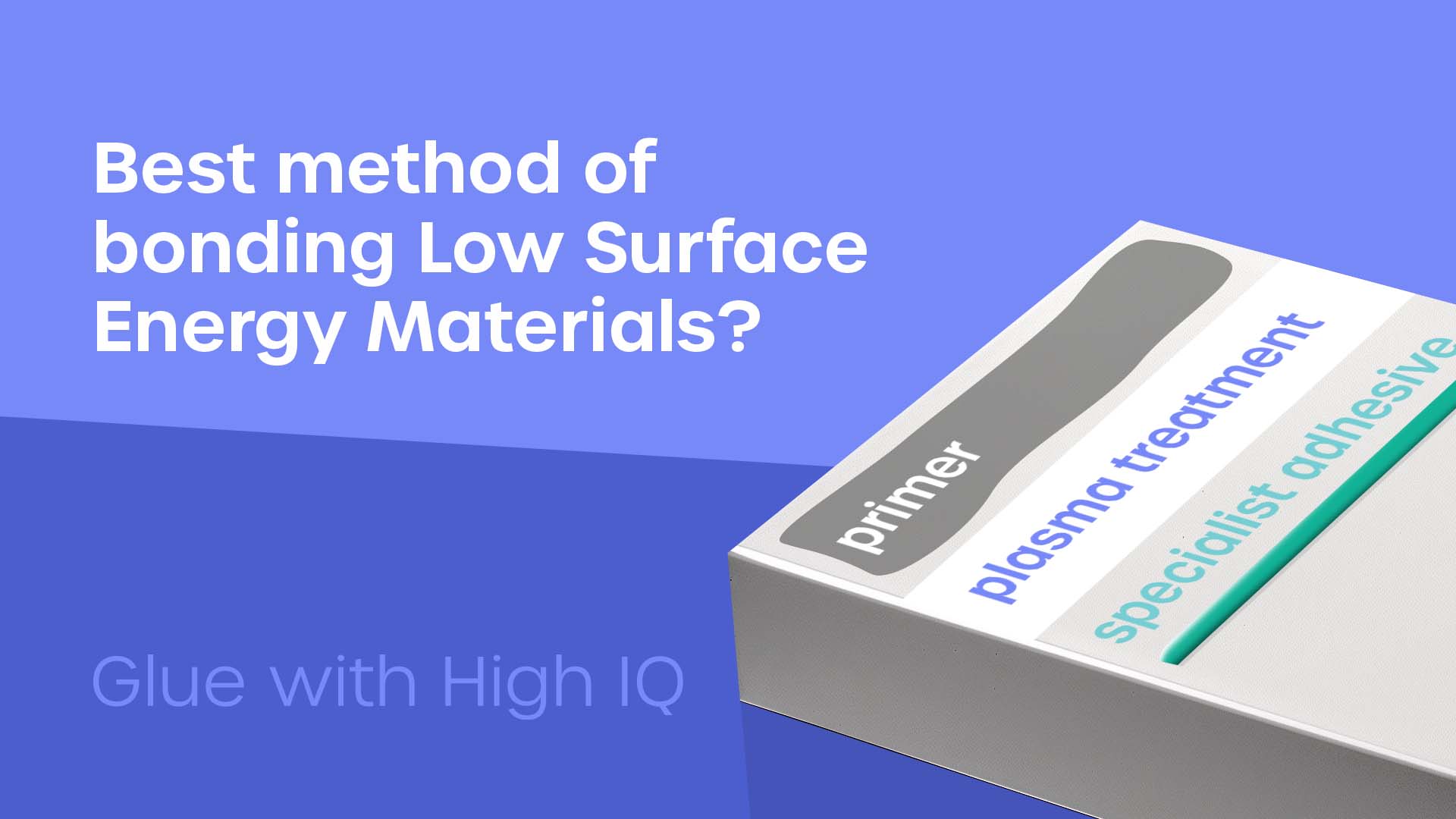Top 3 ways to bond Low Surface Energy Plastics like Polypropylene and Polyethylene?

dsw
Bonding any material can be challenging at times. Making sure a bonded joint has enough strength and durability to survive the rigours of the real world is no simple task.
It's even more difficult when apparently nothing sticks to the plastic you are using. Sound familiar? Don't worry. There are several solutions available.
Here at Forgeway, we have been helping companies solve bonding challenges for over 25 years. Bonding low surface plastics has always been a challenging application.
But it is possible. People have often come to us claiming that they can't use a certain plastic because the surface energy is too low. Not only is it possible; there are three different options available.
In this article, we discuss those three options. We also analyse the pros and cons of each method to help you decide how to bond your low surface energy plastic.
Why are low surface energy plastics difficult to bond?
Low surface energy plastics are difficult to bond because of their low surface energy. Many factors can affect adhesion. However, the surface energy of a material will have the biggest influence on whether an adhesive can form a chemical bond.
This is because low surface energy materials will repel liquids. This causes the liquid to 'bead up' rather than 'wet out'. As the graphic below shows, higher surface energy materials are much more receptive to liquids.
Materials with low surface energy create a non-receptive layer. This makes it difficult for adhesives to build a strong chemical bond.
Although the adhesive can form mechanical bonds with any pits and grooves on the surface, it's often not strong enough to hold materials together. There will always be limited chemical bonding between 'standard' adhesives and low surface energy plastics.
The graphic below showing chemical adhesion. Low Surface Energy materials will not form a chemical bond with adhesives like on the left hand side.
What are the different methods of bonding low surface energy plastics?
It's not all doom and gloom. It is certainly possible to bond low surface energy plastics like polypropylene and polyethylene. You have several methods to choose from.
Using primers to bond challenging plastics
Primers can form a strong chemical bond with the plastic. They can then form a new layer for the adhesive to create a strong chemical bond.
Priming surfaces before bonding and painting has been a method used for centuries. It is by no means a new method of bonding.
However, it has worked. And it continues to work very well to this day. Priming ensures an existing adhesive can form a bond with a low surface energy plastic.
Nonetheless, priming isn't a perfect method. The priming creates another process that can go wrong. With companies looking to improve repeatability and consistency, having another process often adds complexity.
Primers often contain harmful chemicals. This makes them difficult to work with as they can require extensive PPE. These harmful chemicals are also not a future-proof solution as regulations and restrictions increase.
In summary, priming works. But it does have several drawbacks. Make sure you are aware of these drawbacks before using primers to bond Low Surface Energy plastics.

Altering the plastic's surface using treatment methods
'Altering the plastic's surface' sounds quite ominous. However, it simply means altering the chemical structure of the plastic's surface. This increases the surface energy of the plastic. It is now much more receptive to adhesives and bonding.
There are a few different surface treatment methods. Corona, plasma, and flame treatment are the most common. You can also use acid etching but it's not as popular.
All of the common methods will remove non-polar hydrogen from the plastic's surface. Then, it will either introduce or bring forward polar groups (such as oxygen-rich species) to the plastic's surface.
These added polar sites create a much more receptive bonding site for the adhesive. Plasma, corona, and flame treatment will all be able to convert most low-surface energy plastics into a readily bondable material.
The drawbacks. Of course, there are drawbacks. These surface treatment methods will be costly. Although you can get smaller 'hand-applied' surface treatments, the machine operated can be into the six figures.
They also might not work on all low surface energy materials. When you have very high or low-density materials, the surface treatment methods may not work as effectively.

Using a specialist plastic bonding adhesive
With the previous two methods, you can use 'standard' adhesives in collaboration with them. As long as they are compatible with the primer, most adhesives will work with either priming or surface treatment.
Specialist adhesives are special. Surprisingly. They will readily bond to a material with low surface energy that has just been wiped clean. This is because they can permeate the material's surface to create a mechanical and chemical bond with the low surface energy material.
These adhesives are very capable of forming strong bonds with most low surface energy materials. Because there are no added processes (like priming or surface treating), using specialist adhesives is often easier than 'normal' adhesives.
But, specialist adhesives have drawbacks. Not only are they costly, but they can also contain harmful chemicals. The same chemicals that help form a bond with low surface energy materials can be hazardous to humans.
That being said, specialist adhesives are often no more harmful or expensive than primers. With the developments and advancements in these adhesive technologies, they are fast becoming the most appealing option for bonding low surface energy materials.
If you want to learn more about Forgeway's specialist adhesive that can bond low surface energy materials, click the banner below.
What is the best method to bond LSE plastics?
Without knowing your specific application, it's very difficult to provide a nuanced opinion on the best option for you. You've read through the three main options. Now it's time to make a decision.
At Forgeway, we have helped companies solve their bonding challenges for over 25 years. Bonding low surface energy materials has always been a challenging application.
Nonetheless, it is possible. As we have explained, there are several methods available. But which is the best option for you?
The best method entirely depends on your application.
If you are happy with the added processing time of a primer or surface treatments, they are both effective methods of bonding low surface energy materials. Surface treatment is more costly but much more consistent.
However, if you can't sacrifice production times and you need an easy and quick method, using a specialist adhesive is the route to go down.
Still stuck? You can reach out to an expert.
Thomas is the Content Manager here at Forgeway. Thomas' job is to translate the technical jargon from the ivory tower of academia into easy-to-read content that everyone can understand. Forgeway's mission is to answer every question our customers and prospective clients ask, or are apprehensive to ask.





